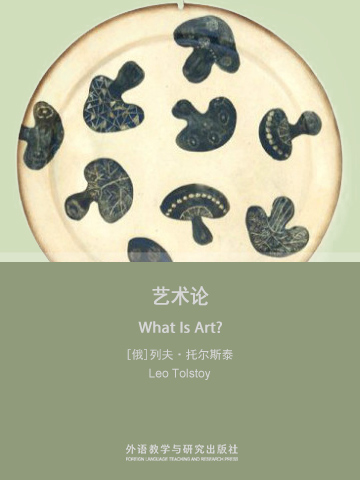跟随大师的脚步,探索艺术的源泉。
Tolstoy cites the time, effort, public funds, and public respect spent on art and artists as well as the imprecision of general opinions on art as reason for writing the book. In his words, "it is difficult to say what is meant by art, and especially what is good, useful art, art for the sake of which we might condone such sacrifices as are being offered at its shrine".
Throughout the book Tolstoy demonstrates an "unremitting moralism", evaluating artworks in light of his radical Christian ethics, and displaying a willingness to dismiss accepted masters, including Wagner, Shakespeare, and Dante, as well as the bulk of his own writings.
Having rejected the use of beauty in definitions of art (see aesthetic theory), Tolstoy conceptualises art as anything that communicates emotion: "Art begins when a man, with the purpose of communicating to other people a feeling he once experienced, calls it up again within himself and expresses it by certain external signs".
This view of art is inclusive: "jokes", "home decoration", and "church services" may all be considered art as long as they convey feeling. It is also amoral: "[f]eelings … very bad and very good, if only they infect the reader … constitute the subject of art".
Tolstoy also notes that the "sincerity" of the artist—that is, the extent to which the artist "experiences the feeling he conveys"—influences the infection.
本书为大文豪托尔斯泰所著,内容虽涉猎繁杂.但其最核心的问题始终是:什么是艺术。对于这个看似简单而老套的问题,托尔斯泰提出了他的观点。在他眼里.很多最经典最伟大的作品是坏的艺术,甚至不是艺术,而按照他的判断体系,我们的确可以得到与他相同的结论。托尔斯泰的观点触及了艺术最根本的本质,从这些犀利和深刻的言语中,我们的艺术观将接受一次醍醐灌顶般的洗礼。
What is Art? (Russian: Что такое искусство? Chto takoye iskusstvo?) is a book by Leo Tolstoy. It was completed in Russian in 1897 but first published in the English due to difficulties with the Russian censors.
- Introduction
- The Author’s Preface
- Chapter I
- Chapter II
- Chapter III
- Chapter IV
- Chapter V
- Chapter VI
- Chapter VII
- Chapter VIII
- Chapter IX
- Chapter X
- Chapter XI
- Chapter XII
- Chapter XIII
- Chapter XIV
- Chapter XV
- Chapter XVI
- Chapter XVII
- Chapter XVIII
- Chapter XIX
- Chapter XX The Conclusion
- APPENDIX I.
- APPENDIX II.
- APPENDIX III.
- APPENDIX IV.






















 京公网安备 11010802032529号
京公网安备 11010802032529号
笔记加载中...